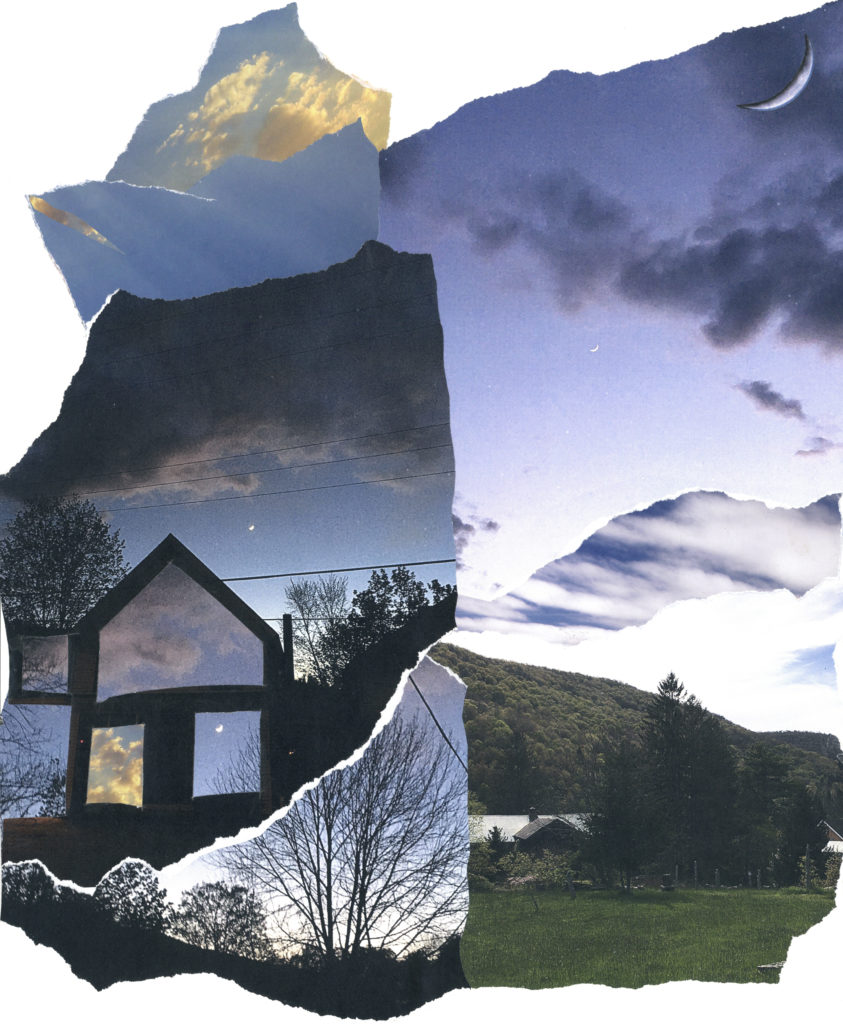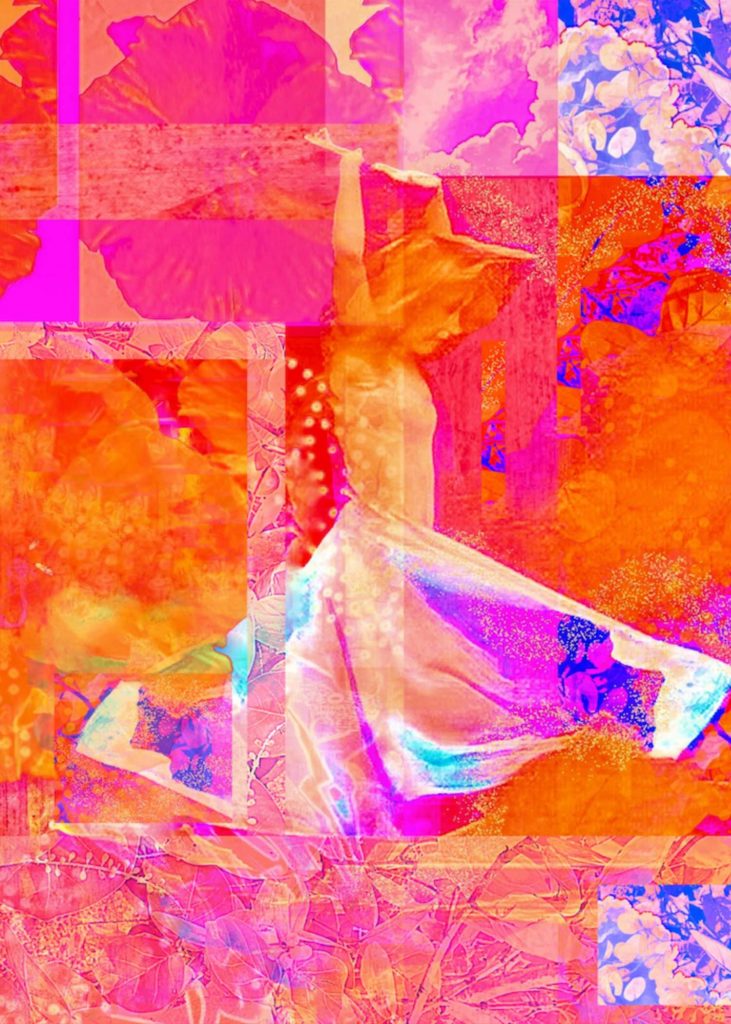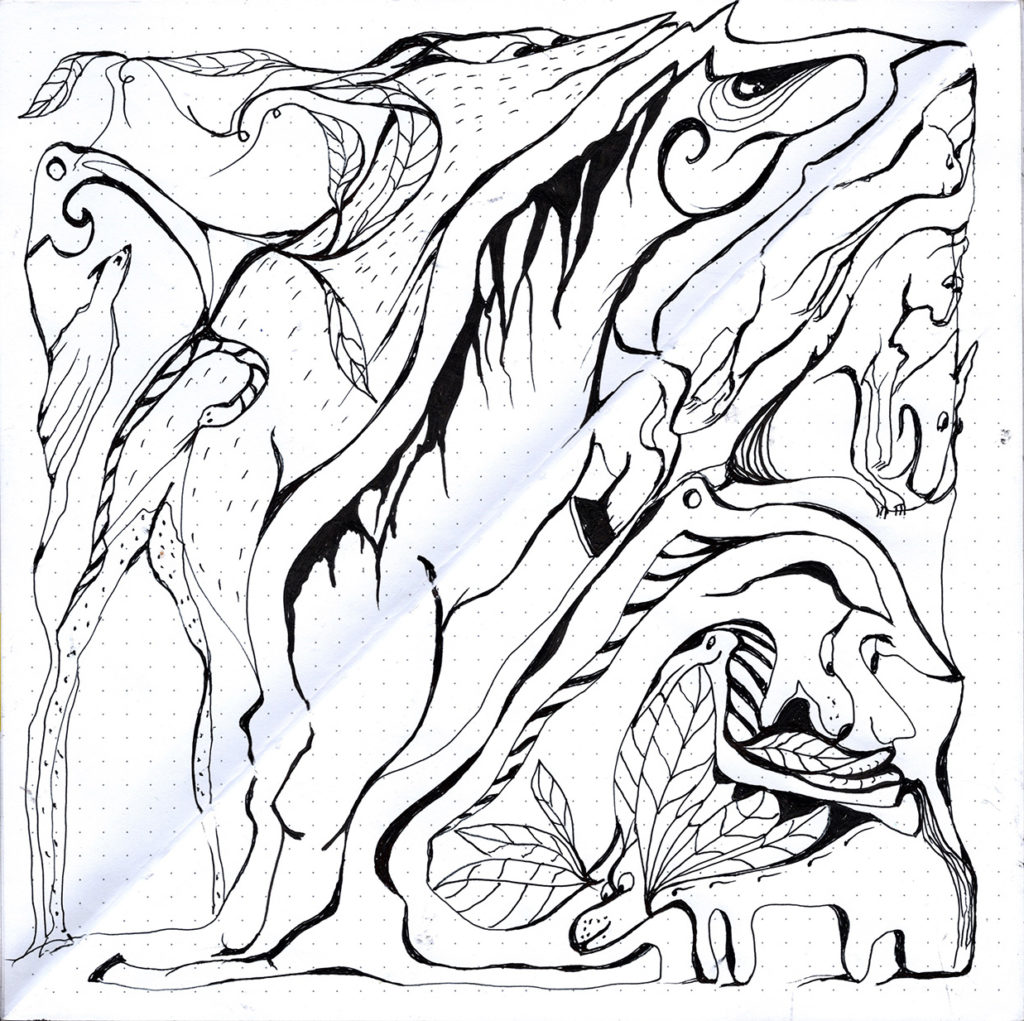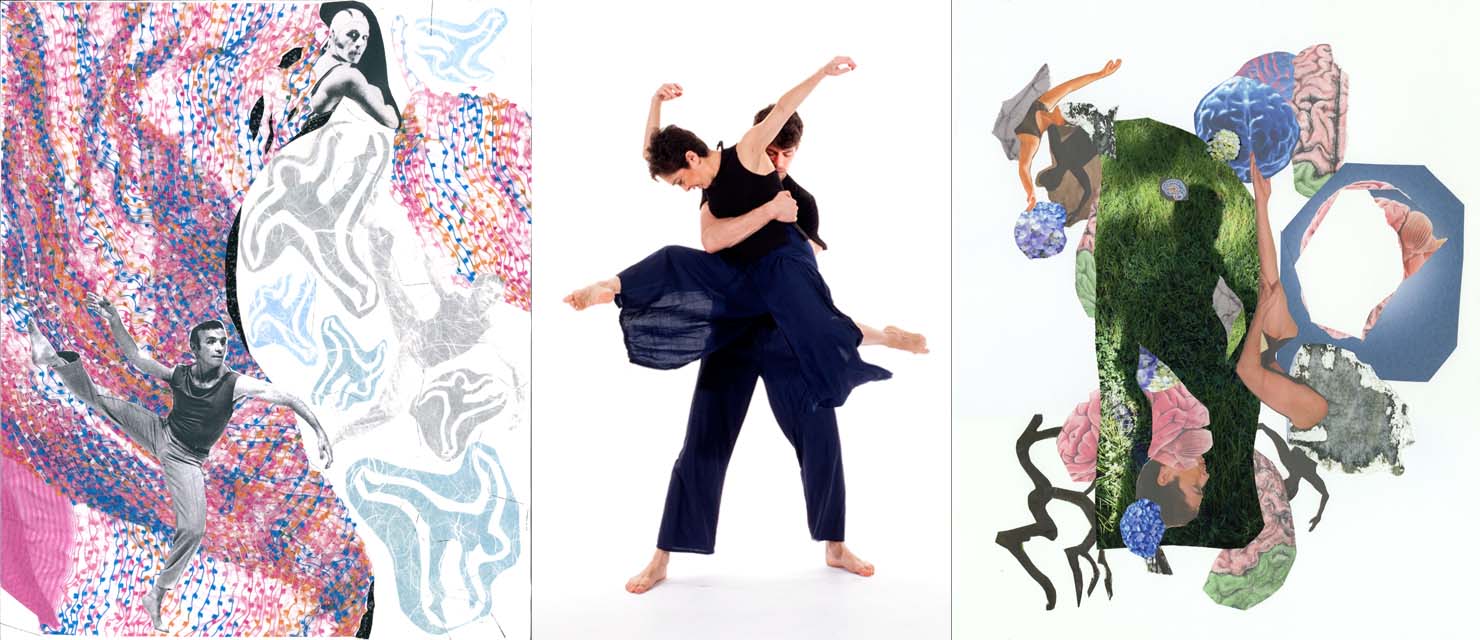Janis Brenner On Compiling Her Artistic Autobiography Through Visual Art
Some dancers write memoirs. But since December 2019, multidisciplinary artist Janis Brenner has been exploring a different method of compiling her artistic autobiography: collage.

Brenner’s performing and creating comes from a two-pronged lineage: the first, of Mary Wigman, branching through direct study with Hanya Holm, Alwin Nikolais, Phyllis Lamhut and Murray Louis, in whose company she danced; the second, through a long-standing working relationship with Meredith Monk. This confluence of relentless improvisational play and meticulous compositional rigor is right at home in a visual art form.
“I get an impulse to make a piece about Murray Louis,” she says, giving an example to illustrate her process. “I find some colors that make me think of Murray, and some photos that speak to his essence. How do I get Murray to be in motion on a flat canvas? Maybe I should turn it upside down. Maybe I should paint over this photo. I try out all these things, then I get to a place where this corner really works. I keep that, and continue composing from there.”
Working in this way has stood in for Brenner’s choreographic urges since late 2019. Though necessitated by pandemic limitations, it’s proved similarly artistically fulfilling. “My company has dissolved, and I really can’t imagine bringing it back as an ongoing entity,” she says. “I had one for 30 years; I’ve come to terms with having to let it go.”
What Brenner does have on the horizon is her first gallery show. Running in March, at Susan Eley Fine Art in New York City, Brenner will be showing work alongside two dance colleagues who have also come into visual art practices: Christine Jowers, who will be showing a variety of colorful works in various mediums, and JoAnna Mendl Shaw, who renders black-and-white “doodle” paintings that interweave abstract and bodily forms. [Editor’s note: The show has been postponed to March 14–21 due to COVID-19 concerns.]


“It’s my answer to having a New York season,” Brenner says, “except the art is on the walls instead of the stage.”




